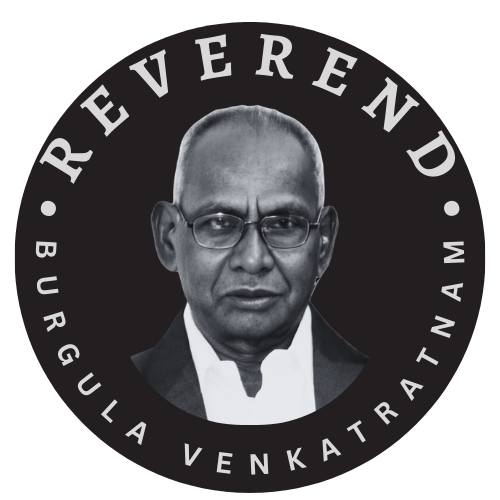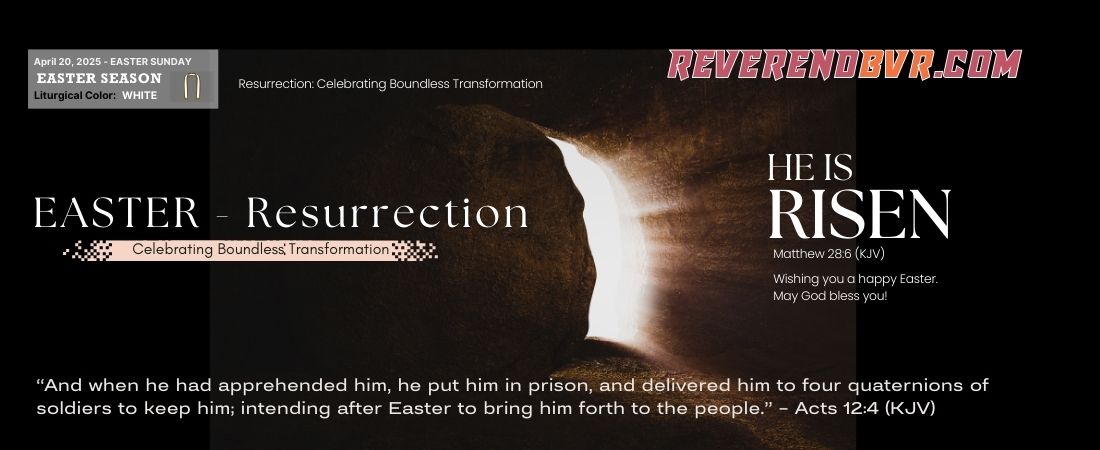“He is not here: for he is risen, as he said.” – Matthew 28:6 (KJV) – Easter Sunday – April 20, 2025
Introduction: The Name “Easter” in the Bible and The Timeline of Resurrection
In the King James Version (KJV) of the Bible, the word “Easter” appears only once in Acts 12:4:
“And when he had apprehended him, he put him in prison, and delivered him to four quaternions of soldiers to keep him; intending after Easter to bring him forth to the people.” – Acts 12:4 (KJV)
Some point to an old pagan myth about Ishtar (also called Astarte), a goddess said to have emerged from a giant egg. While that story exists, it has no real connection to the Christian celebration of Easter. Yes, eggs were ancient symbols of life and rebirth, but Christians gave them new meaning: Just as a egg egg cracks open to reveal new life, Jesus broke out of the tomb —bringing new life to all. The tradition of Easter eggs began much later. Early Christians dyed eggs red to remember the blood of Christ, and the egg became a symbol of the resurrection. Modern customs like egg hunts and chocolate eggs are mostly fun traditions with folk roots, not pagan worship. So, while the egg symbol may be ancient, the Christian meaning of Easter is totally different—centered on Jesus’ victory over death, not any goddess or myth.
As believers, we redeem and reclaim the name and the season of Easter to point to the true miracle: The resurrection of Jesus Christ—Son of God, conqueror of death, and giver of boundless transformation.
Timeline Overview:
| Event | Jewish Calendar | Biblical Reference | Historical Gregorian Day |
| Passover (Pesach) Last Supper | 14 Nisan | Exodus 12:6 | Maundy Thursday evening |
| Crucifixion – Jesus as Passover lamb | 14 Nisan | Mark 15:25 | On Friday Jesus crucified at 9 AM, dies at 3 PM as Passover lambs are slain |
| Feast of Unleavened Bread / High Sabbath – Jesus buried in Tomb | 15 Nisan | Luke 23:56 | Friday sunset to Saturday sunset |
| Weekly Sabbath Ends | 16 Nisan Evening | Mark 16:1, Luke 23:56 | Saturday Night |
| Resurrection | 17 Nisan Early Dawn | Mark 16:1–6, Luke 24:1–6, Matt. 28:1–6, John 20:1–9 | Sunday |
Understanding the Month of Nisan in the Jewish Calendar:
Nisan (also called Abib in older Hebrew texts) is the first month of the religious year in the Jewish calendar (based on Exodus 12:2).The Jewish calendar is lunar, so months begin with the new moon. Nisan typically falls in March–April on the Gregorian calendar. A Jewish day starts at sunset and ends at the next sunset. So, for example, 14 Nisan begins at sunset on Thursday and ends at sunset on Friday.
1. God: The One Who Grants Boundless Transformation (2 Samuel 22:1–20)
David’s powerful song of deliverance in 2 Samuel 22 is not just a testimony of past victories—it is a foreshadowing of resurrection power.
David paints a picture of a God who reaches down from heaven, draws us out of deep waters (v.17), rescues us from strong enemies, and brings us into a spacious place (v.20).
This is the nature of the God we serve: a fortress, a rock, a deliverer. He is the God of transformation—a God who moves from wrath to rescue, from chaos to calm, from death to life.
Not just personal salvation – David’s song reveals how God transforms society itself. When God intervenes: Oppression is lifted, Justice rolls like waters and Peace floods the land. Boundless transformation goes beyond the spiritual – affecting how we live, lead, and love.
2. Jesus: The Ideal Example of Boundless Transformation (Mark 16:1–11)
The resurrection of Jesus Christ is the greatest evidence of transformation the world has ever witnessed. The tomb was sealed, guarded, final. But God shattered the expectations of man and rolled away the stone.
To grieving women, an angel proclaimed: “He is not here. He is risen!”
This isn’t just historical. It’s personal. To those who mourn, Jesus brings joy. To the hopeless, He brings victory. To the dead places in our lives, He brings resurrection. Through Christ’s resurrection, we are reminded that what seems final is not final with God. Dead things can live again.
Jesus’ resurrection speaks volumes—not only about His divinity, but also about His humanity. He died like us so that we could live like Him. He took on flesh so that we might be made new.
The resurrection is a message to all who grieve, mourn, or face hopelessness. It shouts into the silence: “He is alive!” What was closed is opened. What was broken is restored. What was buried is resurrected.
3. The Message of Boundless Transformation – (1 Corinthians 15:20–28)
Paul powerfully declares: “But now is Christ risen from the dead, and become the firstfruits of them that slept.” (v.20)
The resurrection is not just about Jesus—it’s about you. It is the promise that we too shall be transformed.
In a world full of trials, pain, and death, this is the unshakable hope: “For as in Adam all die, even so in Christ shall all be made alive.” (v.22).
Christ is the firstfruit—a guarantee that a great harvest of resurrection is coming. The last enemy, death, will be destroyed (v.26). Every injustice, every pain, every unanswered question will be swallowed up in victory.
Transformation That is Eternal
Through the resurrection, we are promised a transformation that is not temporary, but eternal.
Righteousness, justice, and truth can be buried for a time—but they will always rise again. Romans 8:11 reminds us: “If the Spirit of him who raised Jesus from the dead dwells in you… he will also give life to your mortal bodies.”
Easter proclaims: Eternal life is real. Evil doesn’t get the last word. God does. And His word is life. This Easter Sunday, as we remember the resurrection, let us also remember what it means:
- There is no situation God cannot transform.
- There is no death God cannot reverse.
- There is no brokenness He cannot heal.
- And there is no sin He cannot forgive.
Whatever you’re facing—pain, addiction, failure, or fear—resurrection power is available for you today. Jesus didn’t stay in the grave, and you don’t have to stay in your despair. He has risen—and so will you.
Let us Pray:
Risen Savior,
We praise You today for the boundless transformation that comes through Your resurrection. You are the God who brings light into darkness, life into death, and hope into despair. Thank You for conquering sin and the grave.
We pray that the same Spirit who raised Jesus from the dead would dwell in us today—reviving our hearts, renewing our minds, and transforming our lives.May we walk in the power of Your resurrection, carrying Your love, justice, and truth to a broken world. Make us agents of transformation, proclaimers of the good news, and people of unshakable hope.
In Jesus’ victorious name we pray,
Amen.
He is Risen. He is Risen Indeed. Happy Easter Everyone!
Jesus’ Death, Burial, and Resurrection Events Timeline:
| S.No | Event | Jewish Calendar Date | Biblical Reference | Historical Gregorian Day | People Involved / Notes |
| 1 | Passover Meal (Last Supper) – Maundy Thursday | Evening of 14 Nisan (begins at Thursday sunset) | Matt. 26:17–30, Mark 14:12–26, Luke 22:7–23, John 13:1–30 | Thursday evening | Jesus eats Passover with the disciples in the Upper Room |
| 2 | Crucifixion | Day of 14 Nisan (Friday) | Mark 15:25, Mark 15:33–37, John 19:14 | Friday | Jesus crucified at 9 AM, dies at 3 PM as Passover lambs are slain |
| 3 | Jesus is taken down and buried before sunset | Before end of 14 Nisan (Friday before sunset) | Luke 23:50–54, Mark 15:42–47, John 19:38–42 | Friday before sunset | Joseph of Arimathea offers his tomb; Nicodemus helps prepare the body. Both bury Jesus before Sabbath |
| 4 | Guards stationed at the tomb | Likely evening of 14 Nisan or early 15 Nisan | Matt. 27:62–66 | Friday night or saturday early morning | Chief priests request Pilate to guard the tomb to prevent “theft” |
| 5 | Feast of Unleavened Bread / High Sabbath | 15 Nisan (Friday sunset to Saturday sunset) | Lev. 23:6–7, John 19:31 | Friday night to Saturday | A High Sabbath coincides with the weekly Sabbath; no work, including burial, is done |
| 6 | Jesus in the Tomb / Disciples in Mourning | 15 Nisan (Saturday) | Luke 23:56, Matt. 27:62–66 | Saturday | Women rest on the Sabbath. Jesus is in the tomb. Guards remain stationed |
| 7 | Sabbath ends / women buy and prepare spices | Evening of 16 Nisan (Saturday night) | Mark 16:1, Luke 23:56 | Saturday after sunset | Women (Mary Magdalene, Mary mother of James, Salome) prepare spices after Sabbath ends |
| 8 | Women go to the tomb / Tomb is found empty | Early dawn of 17 Nisan (Sunday) | Mark 16:1–6, Luke 24:1–6, Matt. 28:1–6, John 20:1–9 | Sunday morning | Mary Magdalene, Mary mother of James, Salome, Joanna, and others go at dawn and find the tomb empty |
| 9 | Jesus appears to Mary Magdalene | Still early 17 Nisan | John 20:11–18, Mark 16:9 | Sunday morning | Mary Magdalene is the first to see the risen Jesus |
| 10 | Jesus appears to other women | 17 Nisan | Matt. 28:9–10 | Sunday morning | Jesus appears to other women on the road after the tomb visit |
| 11 | Jesus appears to disciples on the road to Emmaus | Later 17 Nisan | Luke 24:13–35 | Sunday afternoon | Jesus walks with Cleopas and another disciple (Emmaus disciples), reveals Himself during breaking of bread |
| 12 | Jesus appears to the Eleven | Evening of 17 Nisan | Luke 24:36–49, John 20:19–23 | Sunday evening | Jesus appears in locked room, says “Peace be with you” to the disciples |

